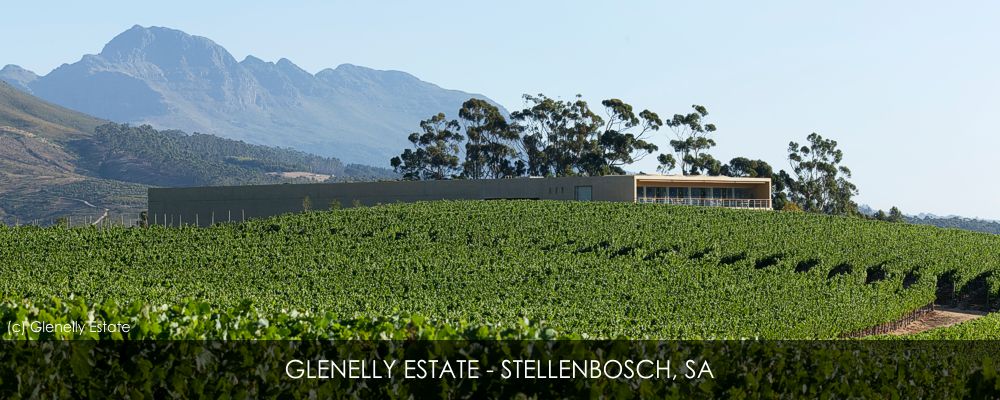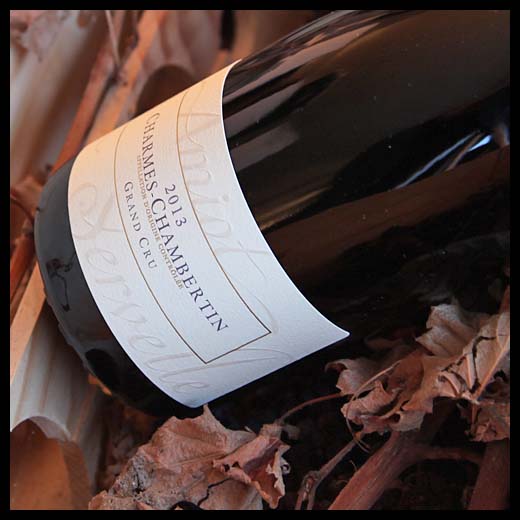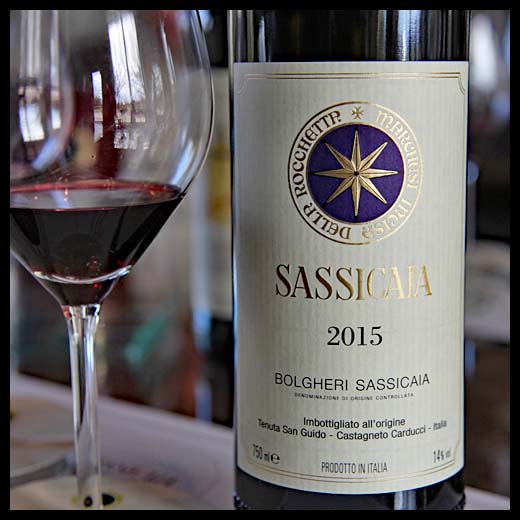Glenelly Estate- South Africa meets Bordeaux
05. November 2015When the best of two worlds meet, magical things happen. In this case the wine traditions from South Africa and France merge and of course, the result is extraordinary. Before concentrating on the future of South Africa's wine industry, we will start from scratch and have a look at the history of Glenelly. May-Eliane de Lancquesaing is the founder of the winery and also known to be the “Grand Dame†of Bordeaux. She was born in 1925 as the daughter of Edourd Miailhe and they were one of the most prominent wine families in Bordeaux at the time. When the chance came up to buy the second-rated Chateaux Pichon Longueville Comtesse de Lalande in Pauillac they acquired it as another one of their many possessions. Then there is a famous story that is still often told today and it happened in 1978. After the collapse of their company the lawyers contacted the three children for the properties to be reorganized. Every estate was written on a note and the family drew lots in order to decide who will inherit which winery. From that moment on May-Eliane was the owner of Chateaux Pichon Longueville Comtesse de Lalande and she wasn't exactly happy about this decision from the beginning on. To be precise she was shocked – she had a fulfilled life in the north of France and didn't want to change anything about that. However, she accepted the challenge and worked in this function with great enthusiasm and turned the Chateaux into one of the worlds best. Ever since “Lalande†is a synonym for precise wine making and benchmark in terms of producing a fine wine.
She became acquainted with winegrowing, was the first owner to move into the Chateaux and invested in vineyards, cellars and real estate. Being an open-minded woman she cared herself for her sales markets and personally met with the scene of important wine collectors in the U.S. The quality and sales developed equally and when the vintage of the century in 1982 came along, her work was awarded with Robert Parker's 100 points (who was a rising star in the wine industry in the same year). This success was followed by a series of exquisite wines and weinrouten is not alone to call those wines one of the finest in der Bordeaux region. Their incredible elegance, seducing flavors and perfect fruit intensity are not often to be found.
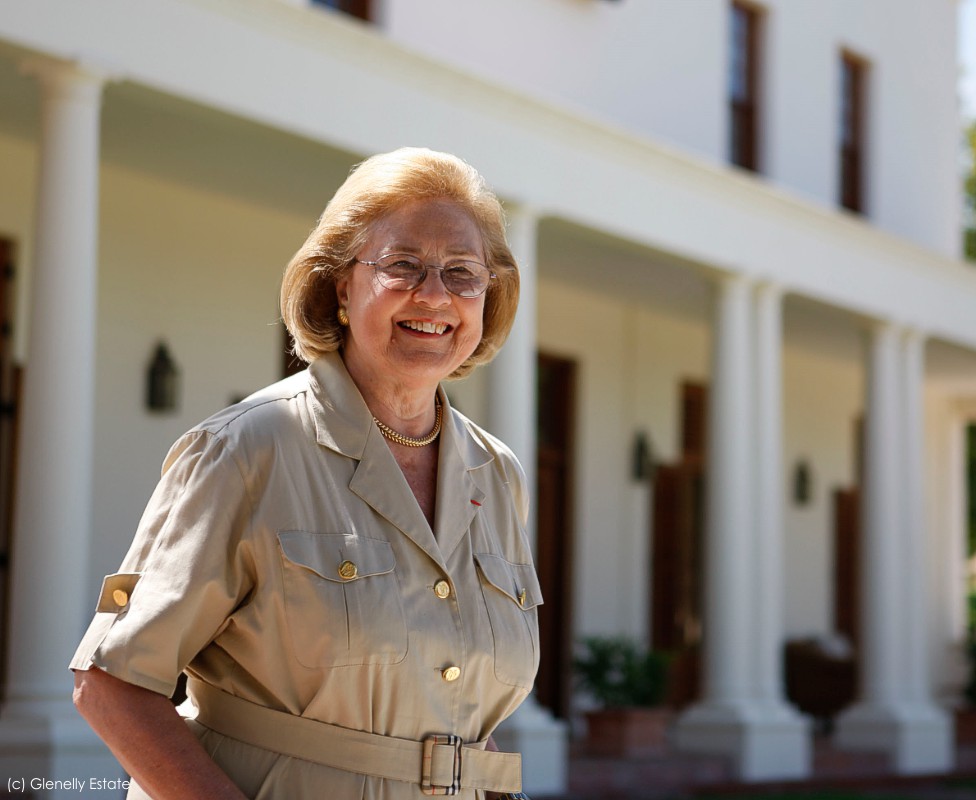
May-Eliane de Lencquesaing in Stellenbosch.
Unfortunately none of her four children were interested in continuing her work at Lalande and she sold the estate. With Roederer she found a buyer at the age of 81 – a good time to retire for the restless May-Eliane. Most probably the fact that she had just bought a farm in South Africa a few years ahead made this good-bye a little easier. The plan was to invest in this winery from Stellenbosch, and this is how the dots connect.
The beginnings of Glenelly go way back into the 17th century. In 1911 Jack Garlick bought the 120ha large property and it stayed in the family for impressive 92 years. After testing the ground and terroir in South Africa, May-Eliane was convinced of the amazing opportunities of winegrowing in South Africa and bought the land in Stellenbosch. The main reasons were the perfect water withdrawl in the soil and the promising south orientation of the vineyard. In 2004 they planted 60ha of wine – 43% Cabernet Sauvignon, 19%Syrah, 13%Merlot, 8% Petit Verdot, 8% Cabernet France and 9% Chardonnay. Followed by an entirely new cellar with the newest technology standards in 2006. Since 2007 the own Glenelly grapes are used and the additional grapes from other estates are becoming less and less. The launch of this super modern building was in 2009 and quite unusual for the region. Due to her 85th birthday, Glenelly was officially opened from May-Eliane de Lencquesiang in 2010 – I guess its never too late for a start-up.
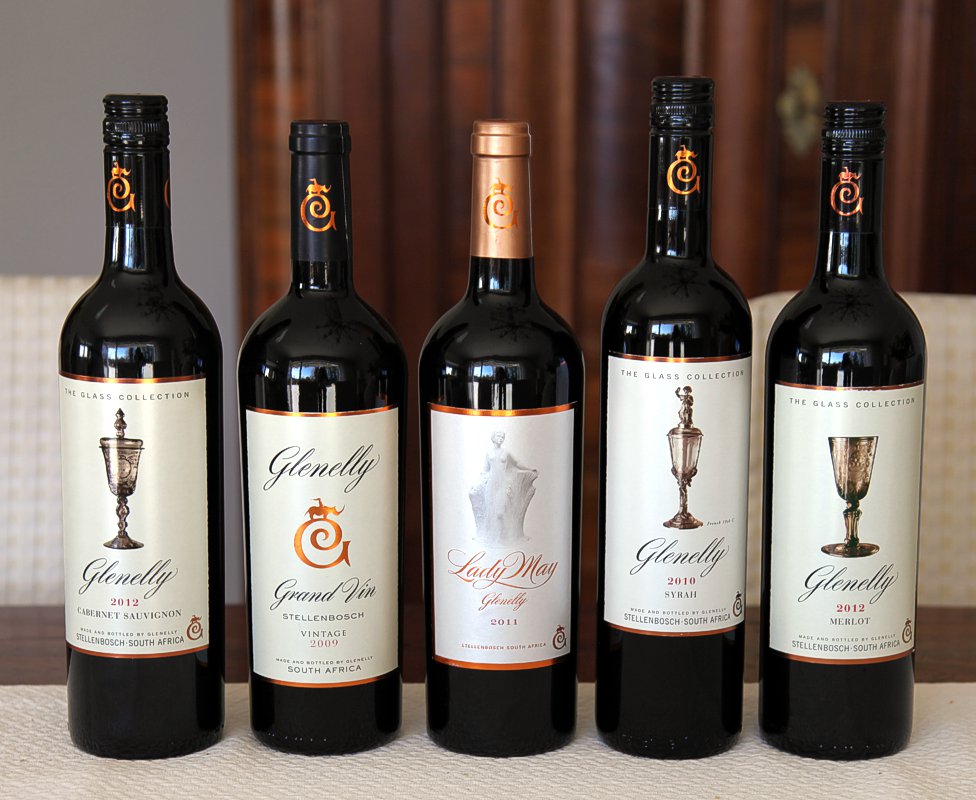
The most important wines from Glenelly made only from French varietals.
South Africa has a very long history in wine growing. In 1655 their first governor from the Netherlands, Jan Van Reinbeck, planted wine and even Glenelly's roots go back until 1682. The wine industry experienced an upswing as the region was led by the British administration in 1807. Boer War and apartheid stopped this boom and the wine industry stagnated until the mid 1990ies when a political change suddenly offered new perspectives for South Africa. The region has perfect weather conditions and is geographically perfect for winegrowing. The climate is Mediterranean but cooler, almost European - the vineyards are protected from the mountains, the winters are rain-laden and the summers are dry. The old soil promotes a big grape variety, a very important fact for any wine grower. Stellenbosch is the center of the South African wine industry and offers a University just 50km from Capetown. Chenin Blanc used to be the most typical grape in the region, but the Bordeaux-like weather conditions favor the growth of Cabernet Sauvignon, Merlot and Syrah.
With the good conditions a lot of international investors came along and South Africa is now an up-and-coming wine region. May-Eliane de Lencquesaing found a vineyard close to the famous Rustenberg winery in the outskirts of Stellenbosch and bought the Glenelly Estate. Her goal was to produce a South African wine with a distinctive French touch. By that she means elegance, balance and fine tannins. Glenelly is still in an experimenting phase, however they are producing several wines and two blends that are proving their quality. Apart from red wine they also offer two Chardonnays: one made in wood barrels and one made without.
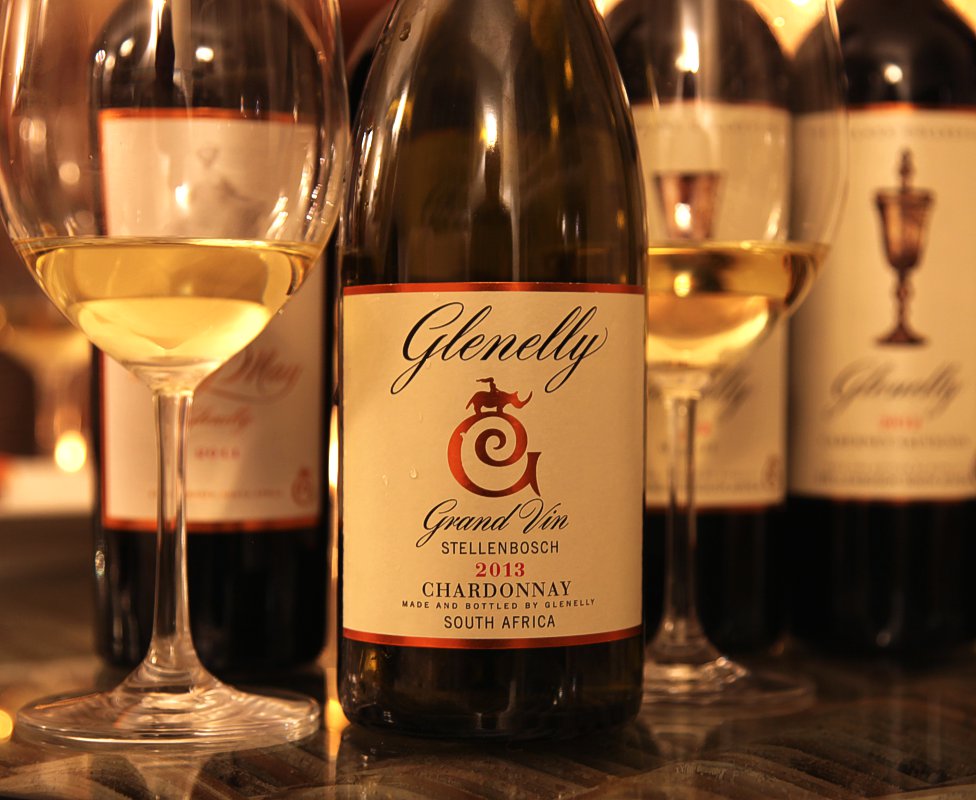
The top Chardonnay with a Californian touch, bold fruit and noticeable wood
The Glenelly wines:
- Grand Vin Chardonnay 2013
A Chardonnay in a deep gold with an almost oily consistence. Intensive fruit, elder and stone fruit with a characteristic Californian taste. The wood barrel cannot be denied; the wine has a wooden-taste. - Syrah 2010
A dark purple color and a fantastic fruity smell. The aromatic taste comes with flavors of pepper; the fruit could be more intense. The wine appears flat and one-dimensional, it is still very young and difficult to evaluate. - Merlot 2012
Same with the Merlot of 2012, we are missing the fruit splash. Probably the best grapes go into the top blends, but this will most certainly change in the next couple of years. - Cabernet Sauvignon 2012
This wine excites with herb aromas and is a fine, medium-bodied wine with a long finish. Very promising. A little lack of fruit sweetness and the finish remains with a dry taste, which is probably due to insufficient ripeness of the grapes. - Grand Vin Vintage 2009
The blend made from 42% Shiraz, 40% Cabernet Sauvignon, 14% Merlot and 4% Petit Verdot is a very individual interpretation of a French/South African wine. Very powerful with intensive fruit and a touch of pepper. Still a little wild and dry at the finish, but you shouldn't forget, that the vine is just 5 years old – what an incredible potential! - Lady May 2011
Glenelly's benchmark and their special blend, which carries the owners name. Very seducing and far the best wine of all with silky smooth tannins and an intense fruit. 85% Cabernet Sauvignon, 10% Petit Verdot and 5% Merlot – a classical Bordeaux blend and a selection of the best grapes. The vinification is made with the most modern methods: long duration as mash, natural yeast and 24 months in wooden barrels. The characteristic is more Californian and heavy, other than that it comes pretty close to a Pichon Lalande. Very good value for money and an absolute recommendation. The first wine critics are going up to 90 points – totally justified in our opinion.
The loss of Pichon Lalande seems to still be a pain in the family. The Chateau communicates that Madame de Lenquesaing has never visited Pichon Lalande ever since they sold it and she avoids travels to Pauillac. Even her grandson Nicolas, who works for Glenelly today avoids the topic. Giving away such an incredible possession is a big decision and maybe she should have waited for the generation of her grandchildren. Whether such a strong family tradition will return in South Africa is still written in the stars and will take the power of the next several generations to build something alike. The potential is phenomenal, but it takes more than a climate change to keep up with Pichon Lalande.
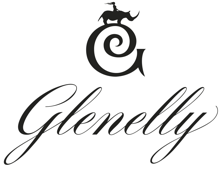
Glenelly Estate
Email: wine@glenelly.co.za
Lelie Street
Ida`s Valley
Stellenbosch 7600, South Africa
Import into Germany: Schlumberger

